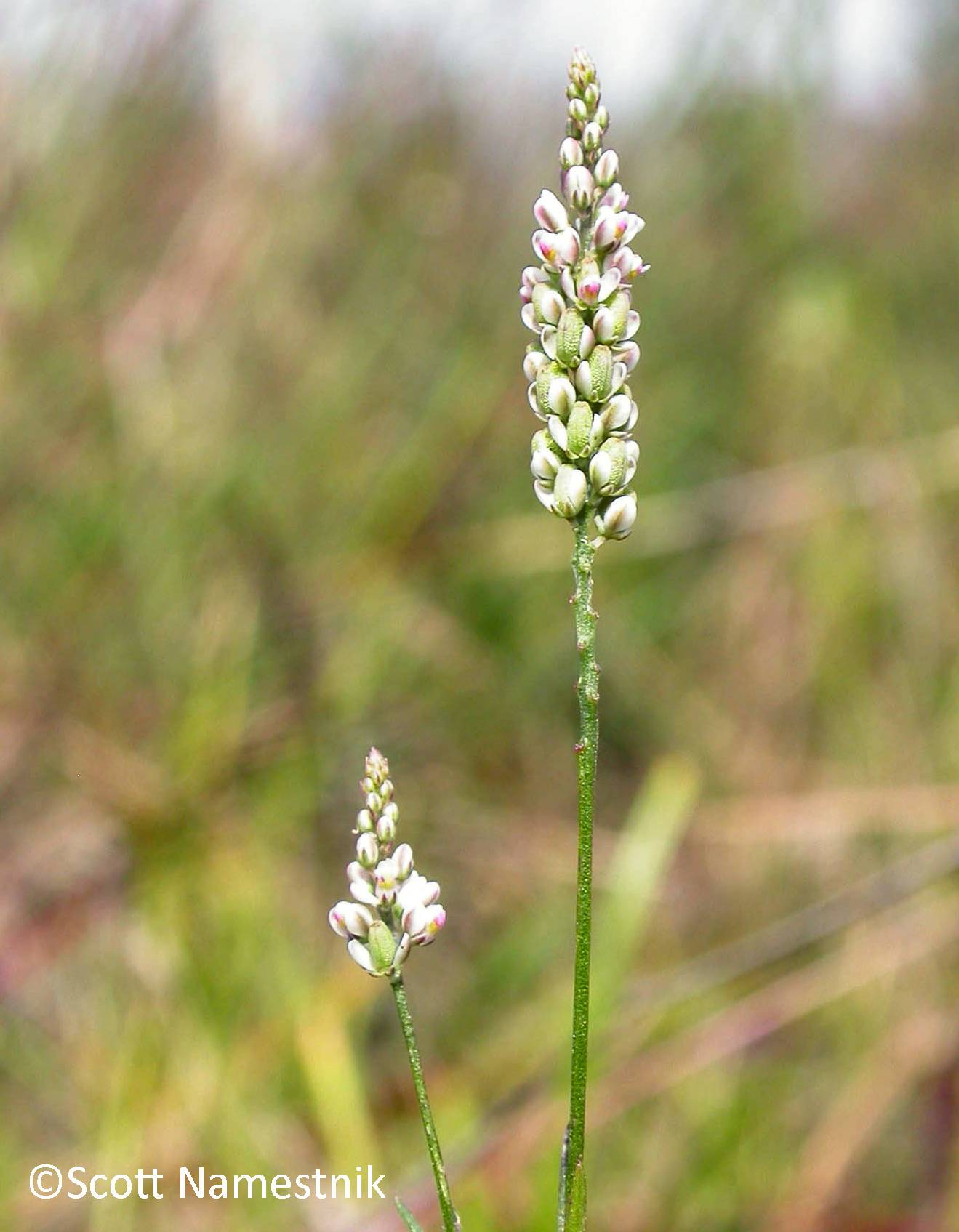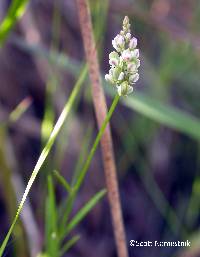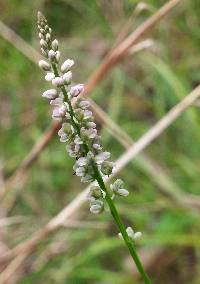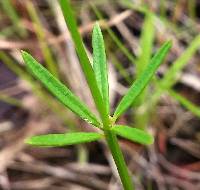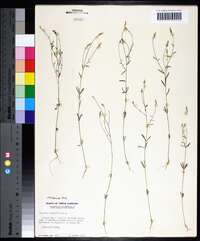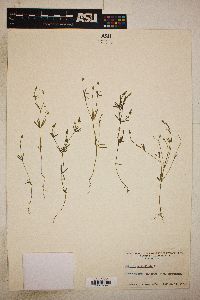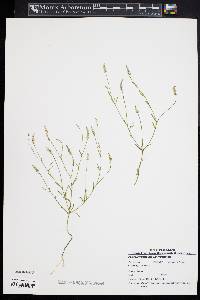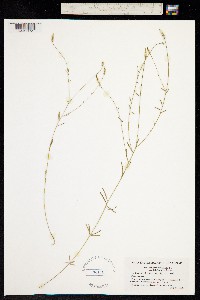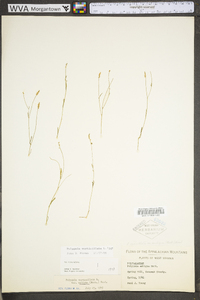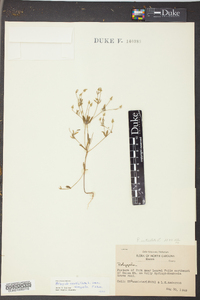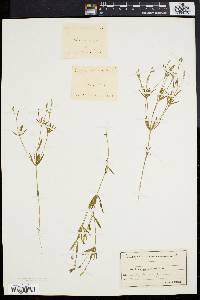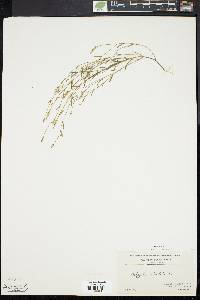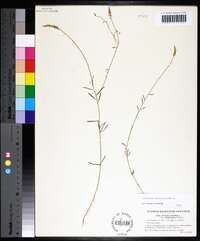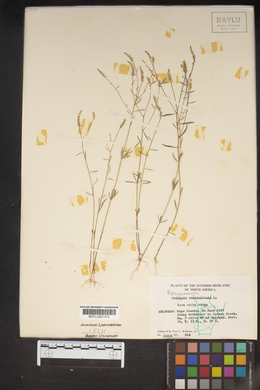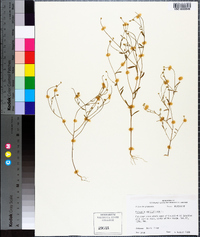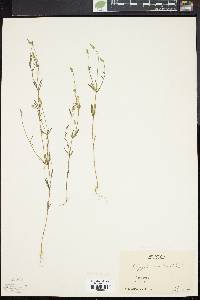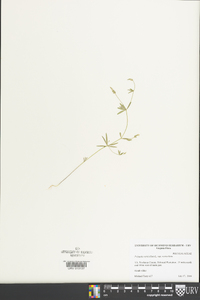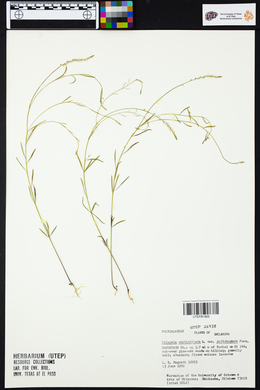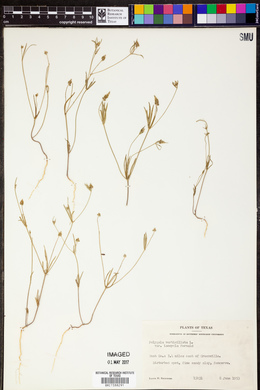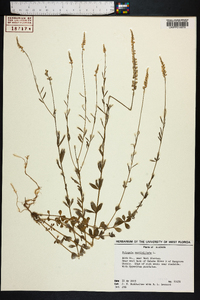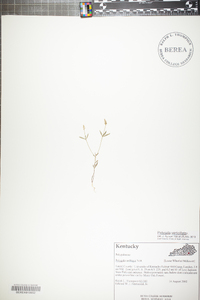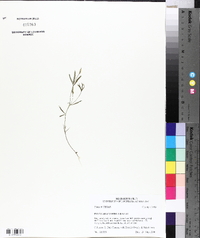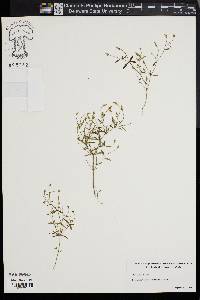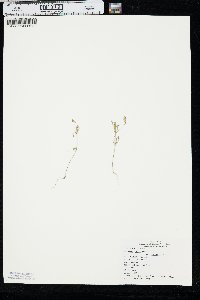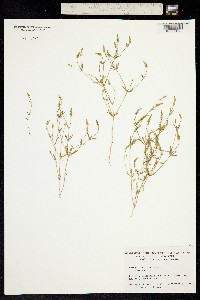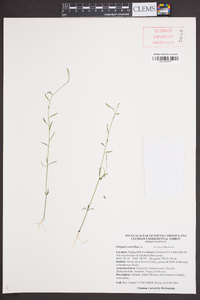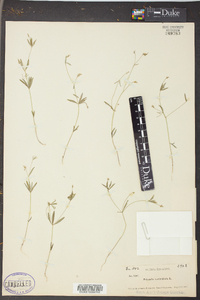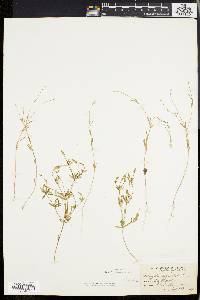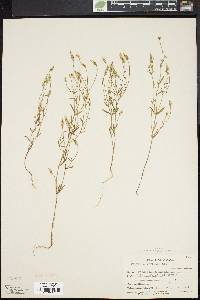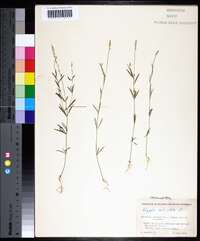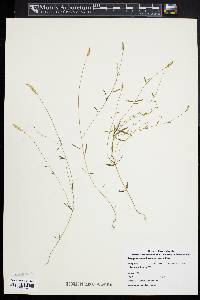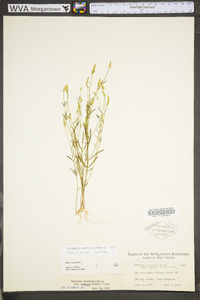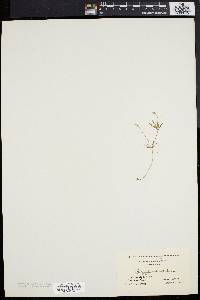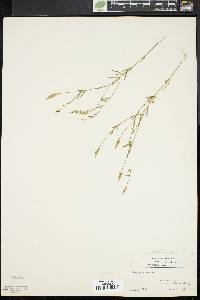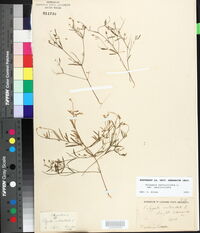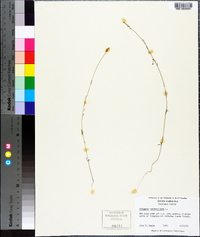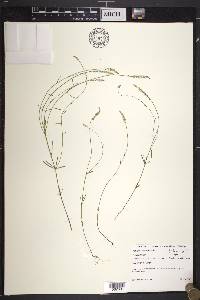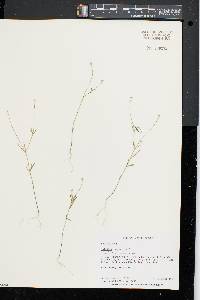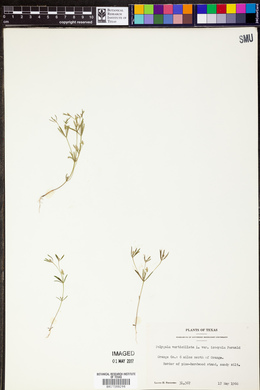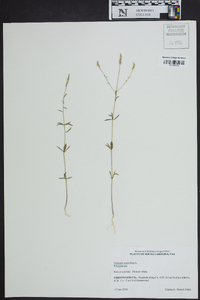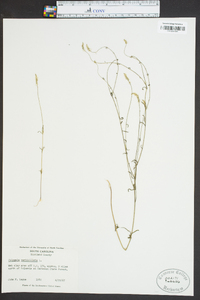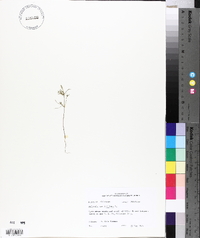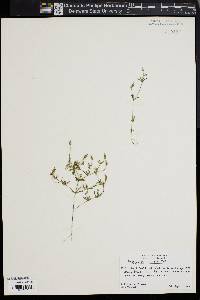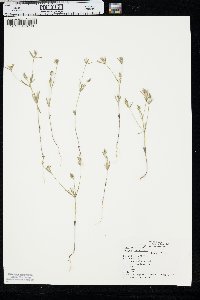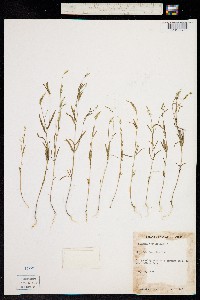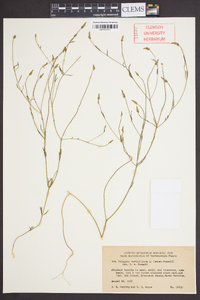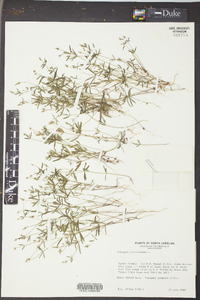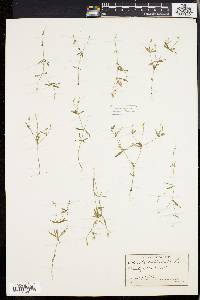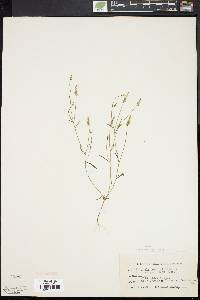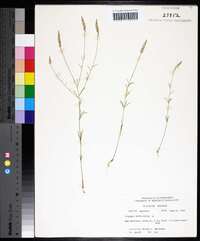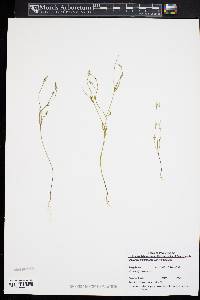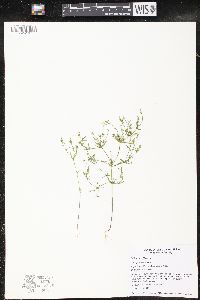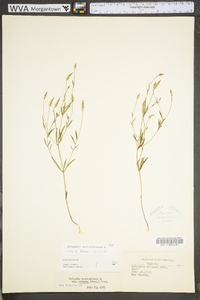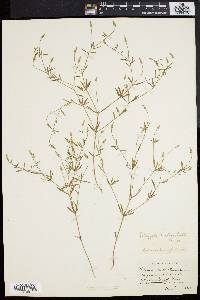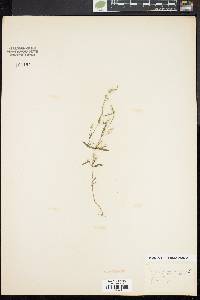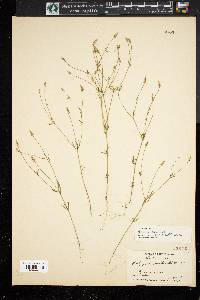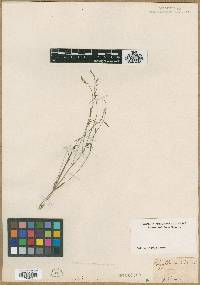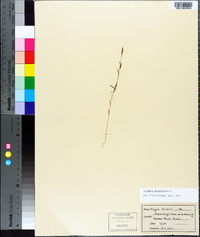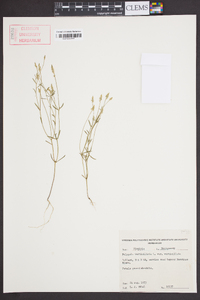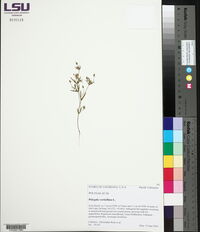Polygala verticillata
|
|
|
|
Family: Polygalaceae
Whorled Milkwort
|
Annual herb 10 - 40 cm tall Stem: erect and branched. Leaves: in whorls of three to five, rarely opposite, with reduced or scale-like lower leaves. Middle and upper leaves are 1.5 - 3 cm long, 0.8 - 3 mm wide, and linear to linear-oblong with a pointed tip. Inflorescence: a dense cluster (raceme) on a 2 - 7 cm stalk, 0.6 - 1.5 cm long, to 7 mm across, narrow cylindrical to cone-shaped. Flowers: white to greenish or pinkish, with three small outer sepals and two petal-like inner sepals (wings) 4 - 5 mm long. The three petals are fused into a tube shorter than the wings, and one petal is fringed. Lower flowers drop as soon as the fruit begins to mature. Fruit: a dehiscent capsule, 1.5 mm long, oval, with finely hairy seeds. The seeds are attached to an appendage (aril) with two oblong to narrow egg-shaped lobes one-third to three-fourths the length of the seed. Similar species: Polygala cruciata and Polygala verticillata have whorled leaves. Polygala cruciata has flower clusters that are larger than 7 mm across and leaves with a rounded to pointed tip. Polygala verticillata var. isocycla differs from the typical variety because it is shorter (5 - 20 cm tall), has only white to greenish flowers, and has inflorescence stalks shorter than 4 cm. Flowering: late July to late August Habitat and ecology: Dry and usually sandy soils, mostly south of the Chicago Region. Occurence in the Chicago region: native Etymology: Polygala comes from the Greek words polys, meaning much, and gala meaning milk, referring to the old belief that milkworts would aid in milk secretion. Verticillata means whorled. Author: The Morton Arboretum Erect, divergently branched annual, 1-4 dm; lvs linear to linear-oblong, 1-2(-3) cm נ1-3 mm, at least the lower (sometimes all) in whorls of 2-5; lower branches of the infl usually opposite or whorled; peduncle elongate; racemes continuous, conic or cylindric- conic, the floriferous and fructiferous part 6-15 mm, appearing truncate at base, the whole axis to 4 cm; fls white, greenish, or occasionally pinkish, the lower dropping promptly as the fr matures; wings half to two-thirds as long as the fr; 2n=34. Moist, sandy soil, grasslands, and woods. July-Oct. Var. isocycla Fernald, occurring nearly throughout the range of the sp. (Vt. to Man., s. to Fla. and Tex.) has finely pubescent seeds, short pedicels a fourth to a third as long as the fr, greenish-white sep, narrow, dense racemes on peduncles 0.5-4 cm, the plant with widely spreading branches. Var. verticillata, occurring from Me. to Mich., s. to Tenn., has hirsute seeds, pedicels a third to half as long as the fr, often purplish sep, wider, looser racemes on peduncles 2-7 cm, and the branches are ascending. Gleason, Henry A. & Cronquist, Arthur J. 1991. Manual of vascular plants of northeastern United States and adjacent Canada. lxxv + 910 pp. ©The New York Botanical Garden. All rights reserved. Used by permission. From Flora of Indiana (1940) by Charles C. Deam [Deam's treatment has three variations: vars. isocycla and sphenostachya in addition to var. verticillata. The common variety verticillata is a tall plant (2-3 dm) with hirsute seed, relatively long pedicels, and often purplish sepals. It grows] mostly near streams and lakes in dry sandy soil in black and white oak woods; rarely in the low sedge border of lakes. [Variety isocycla is a short plant (1-2 dm) with pubescent seed and small capsules (about 1 mm long). It grows] in poor soil in black and white oak woods and rarely in moist prairies. Rare. My only specimen [of var. sphenostachya, a medium height plant (1.5-3 dm) with pubescent seed and capsules ca. 1.5 mm long,] is from a sandy roadside cut four and a half miles north and a mile and a half west of Morocco, Newton County. Other specimens have been collected in Putnam, St. Joseph, and Tipton Counties. …… Indiana Coefficient of Conservatism: C = 4 Wetland Indicator Status: UPL |

